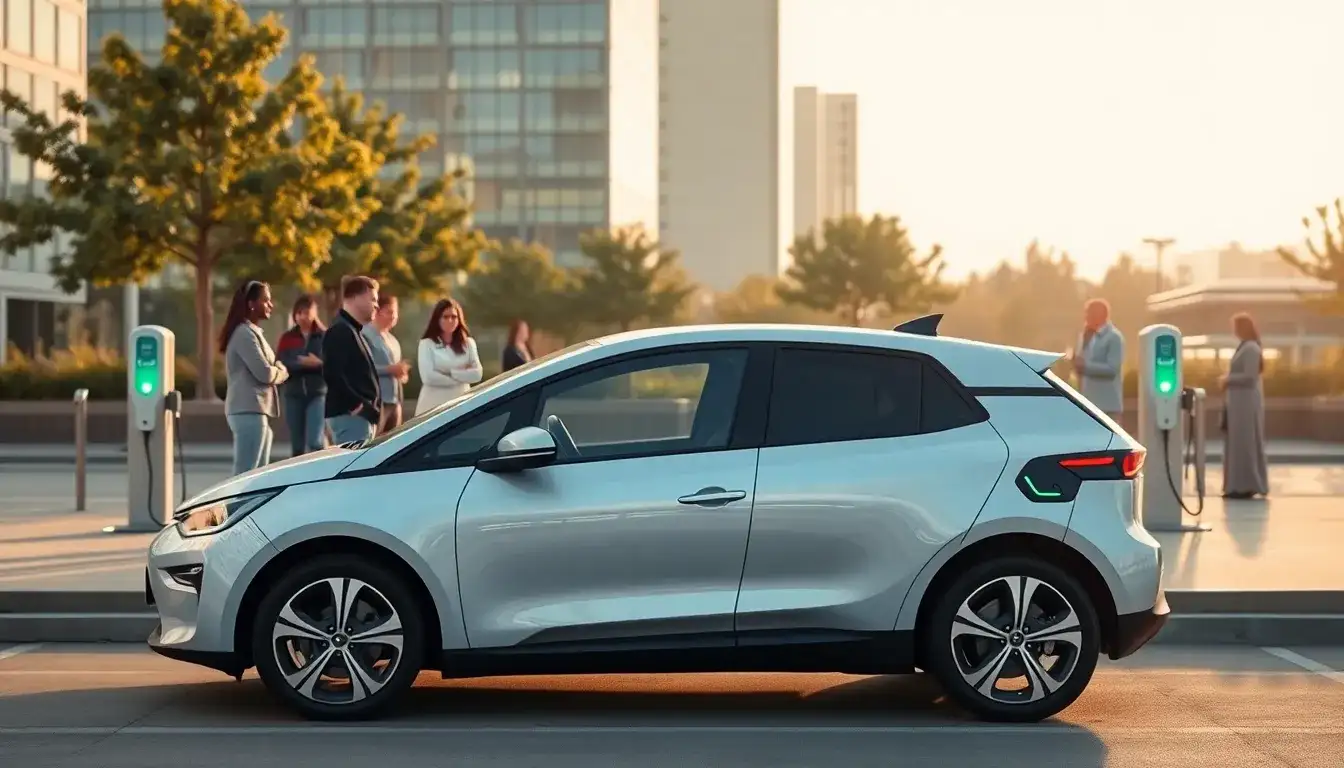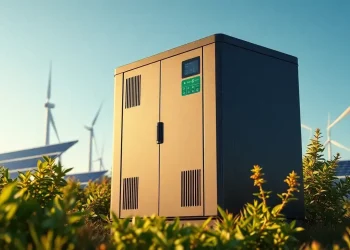
In the world of new energy vehicles, there’s an intriguing hierarchy that influences consumer perceptions and choices. Take the case of Zhang Lin (a pseudonym), a Tesla owner who humorously remarks, “I sometimes feel like I run a red light.” Each time the traffic light turns green, he accelerates, leaving conventional fuel vehicles behind, which are just starting to move. Yet, as he charges at a battery swap station, he can’t help but envy the NIO vehicles boasting “five-minute battery swaps for a 500-kilometer range.” This clever technology creates a subtle psychological competition among drivers. In this landscape, battery swapping looks down on traditional charging, pure electric vehicles overlook range-extending hybrids, and hybrids scoff at plug-in hybrids, who in turn disdain gasoline vehicles. Furthermore, larger batteries often belittle smaller ones, while those with higher safety ratings criticize brands notorious for frequent fires. However, when consumers venture into this battleground, they soon realize that behind each technology’s allure lies unexpected costs and compromises.
1. Battery Swapping: A Costly Efficiency
When discussing battery swapping, consumers primarily think of its time-saving efficiency. Mr. Li (a pseudonym), a NIO owner, recalls his road trip along the 318 Sichuan-Tibet Highway last year, where he planned his route using a mobile app to include 12 battery swap stations. At the Gelaizi Mountain Pass, he completed a battery swap in just four minutes, while adjacent pure electric vehicle drivers were left waiting in sub-zero temperatures. “At that moment, I realized that battery swapping is the true embodiment of new energy,” he reflects.
As of now, NIO has established 970 battery swap stations across the country, creating a network that spans 9 vertical and 9 horizontal highways. For instance, along the G15 Shenhai Expressway, which stretches 3710 kilometers, NIO had 36 battery swap stations operational by June 2022, ensuring coverage across eight provinces, with an average station located every 115 kilometers. This battery swapping efficiency competes directly with that of fuel vehicles, yet the smart driving experience is worlds apart.
In addition to efficiency, battery swapping provides significant advantages, such as mitigating battery health risks, allowing for flexible upgrades, and offering resilience through a dual network of charging and swapping. Users are protected from battery degradation, as each swap guarantees a healthy battery. For long trips, they can temporarily upgrade to a 150 kWh battery, extending their range beyond 1000 kilometers for a rental fee of just 100 or 150 yuan. As users exit urban areas, the national battery swap network ensures seamless connectivity, and in remote regions, NIO vehicles are compatible with nearly all public charging stations.
However, skeptics of battery swapping argue that it’s a transitional solution, likening it to the outdated practice of replacing mobile phone batteries. While the two concepts are fundamentally different, the infrastructure and capital required for charging stations remain significant challenges. Taking NIO as an example, as of March 14, it had 3161 battery swap stations, with a total investment exceeding 6.3 billion yuan, which poses a considerable financial burden for any business that has yet to turn a profit while still expanding its network.
2. Pure Electric Vehicles: The Lies of Range Ratings and Real-World Struggles
Wang (a pseudonym), a staunch proponent of pure electric vehicles, found her faith shaken. Her Model Y claims a range of 660 kilometers but only achieves about 380 kilometers in winter conditions. A particularly harrowing experience during a rainstorm left her with just 120 kilometers of range while the nearest charging station was 110 kilometers away. “In that moment, I understood why some people prefer range-extending vehicles,” she admitted.
The challenges faced by pure electric vehicles stem from three main contradictions: the gap between laboratory tests and real-world conditions, the uneven distribution of charging networks, and fears of depreciation. The CLTC range test includes 40% low-speed conditions, while actual highway driving often exceeds 60%. Third-party assessments reveal that the small P7’s CLTC range achievement is only 68%, and the Toyota bZ3 loses half its range in -10°C temperatures.
As of July 2024, China had over 10 million charging stations, yet fast chargers accounted for less than 30%, with an 18% failure rate. One Tesla driver reported that three out of four charging stations at service areas along the G15 highway were malfunctioning. Additionally, according to data from the China Automobile Circulation Association, the three-year resale value for plug-in hybrids and pure electric vehicles was 45.5% and 45.7%, respectively, showing a decline compared to gasoline vehicles, which maintained a resale value of 52.0%.
Despite these issues, pure electric vehicles still shine in specific scenarios. Zhang, a ride-hailing driver in Shenzhen, calculated that his BYD Seal costs him 600 yuan per month in electricity, saving him 2400 yuan in fuel costs compared to gasoline vehicles. “The money saved is enough to offset any depreciation,” he noted, illustrating the operational market’s favor towards pure electric vehicles.
3. Range-Extended Vehicles: The Fallacy of Convenience and Hidden Costs
Mr. Chen (a pseudonym), a Li Auto L9 owner, once mocked range-extended vehicles as unnecessary. However, a winter road trip changed his mind: in -15°C conditions, his pure electric vehicle’s range dropped to 50%, while his L9 used gasoline to generate power, keeping the cabin warm at 25°C with a fuel consumption of only 7.2 L/100 km. “I preach environmentalism, but my body tells a different story,” he quipped.
The rise of range-extended vehicles addresses user concerns directly. They eliminate range anxiety by providing both gasoline and electric options, with long-distance fuel costs typically lower than those of gasoline vehicles (the L9’s fuel consumption in electric mode is 7.6L, 2L less than similar gasoline vehicles). Furthermore, they offer a smooth driving experience, thanks to direct electric motor drive, free from the gear-shifting interruptions found in plug-in hybrids. Range-extended vehicles also qualify for various subsidies and incentives, allowing them to bypass restrictions faced by traditional gasoline vehicles.
However, the hidden costs of range-extended vehicles can accumulate. Maintenance is more complex, as they require inspections both for electric systems and standard engine oil changes, leading to annual costs that are about 1200 yuan higher than pure electric vehicles. Moreover, the limited electric range (200 km on paper) often only suffices for two days of commuting, leading to frequent discharges that accelerate battery wear. Additionally, the thermal efficiency of 42% for range extenders is nearing physical limits, and in low-battery situations, some models can consume nearly 10L/100 km, negating their fuel efficiency advantage, while low-speed operation can introduce noise issues.
4. Plug-in Hybrids: The Awkward Middle Ground
Ms. Liu, a BYD DM-i owner, manages her routine by using electric power during the week and gasoline for weekend getaways. After driving her Han DM-i for three years and covering 80,000 kilometers, she calculated her combined fuel and electricity cost at 0.25 yuan per kilometer, saving her 30,000 yuan over a gasoline vehicle. However, she experiences charging anxiety: the claimed 120 km electric range often only provides 90 km, necessitating daily charging. One Shanghai driver grumbled, “I bought a plug-in hybrid to simplify things, but it’s more cumbersome than pure electric—I only charged my pure electric car twice a week, but now I have to charge this one every day.”
Additionally, plug-in hybrids face depreciation challenges. Frequent charging increases the risk of battery damage, leading to rejection from second-hand dealers once battery health drops below 80%. Furthermore, the integration of both electric and gasoline systems adds complexity; if something goes wrong, repairs can be significantly more complicated and costly than with traditional vehicles.
5. Gasoline Vehicles: The Stubborn Resilience
Despite the surge in new energy vehicles, gasoline cars have not vanished as predicted. Zhou, a 52-year-old taxi driver, insists on using his Nissan Sylphy: “Charging? Battery swapping? I can drive 800 kilometers on a full tank, and gas stations are everywhere. Why complicate things?” His choice reflects a segment of consumers who remain skeptical of new technologies and demand reliability.
The survival strategy for gasoline vehicles relies on their extensive refueling network, with over 120,000 gas stations scattered across the country. One herder in Inner Mongolia pointed out, “There are more gas stations than cell towers on the grasslands.” They also benefit from mature technologies; internal combustion engines have developed over a century, achieving a failure rate of just 0.2%, compared to an average of 1.5% for new energy vehicles. A repair shop owner noted, “You can fix gasoline cars with your eyes closed, but you need special training for electric vehicles.” Furthermore, gasoline cars maintain stable resale values; for instance, the Toyota Camry retains 65% of its value after three years, far surpassing many new energy models.
Nonetheless, gasoline vehicles are facing their twilight. Policies are tightening, with the EU planning to ban sales of gasoline cars by 2035, and China’s dual-credit policy pushing manufacturers to reduce gasoline vehicle production. A salesperson at a joint venture brand’s dealership admitted, “The factory offers 30% less commission on gasoline vehicles compared to new energy ones, forcing us to shift focus.” Additionally, rising fuel prices—over 9 yuan per liter for 92 octane and approaching 10 yuan for 95 octane—mean that gasoline vehicles incur an average cost of 0.7 yuan per kilometer, 2.8 times higher than plug-in hybrids. One Jetta owner calculated, “My monthly fuel cost is 2500 yuan; that’s enough to buy an old car every year.”
6. The Battery Hierarchy: A Painful Reality
In the battery sector, a clear hierarchy exists. Larger batteries in range-extended models often look down on smaller batteries, while those with higher safety ratings critique brands known for frequent fires. This division may intensify with the introduction of CATL’s new hybrid battery in 2025, which will be used in nearly 30 new hybrid models from manufacturers like Geely, Changan, and GAC. Traditionally, hybrid vehicle batteries have ranged from 10-20 kWh, leading users to face the dilemma of frequent charging and limited electric range. However, the Lynk & Co 900, equipped with CATL’s 52.38 kWh battery, boasts a CLTC electric range of 280 kilometers and a total range of 1443 kilometers, raising the bar for hybrid vehicle technology.
Previously, users joked that “owners of small battery cars are either charging or searching for charging stations.” Now, the design of “large battery + small fuel tank” has empowered consumers. However, the most pressing concern remains battery safety. The National Fire Rescue Bureau has warned that thermal runaway in lithium batteries is inevitable due to complex chemical reactions. In contrast, some battery companies innovate to achieve failure rates as low as one in a billion, while most can only reach one in a million.
7. Conclusion: When Hierarchies Become Markers of Change
The notion of “disdain” reflects each consumer’s personal experiences and attitudes based on their vehicle usage scenarios. While not universally convincing, it offers valuable insights. Consumers should look beyond these hierarchies to choose vehicles that genuinely suit their needs. Whether NIO owners are utilizing mobile battery swap stations along the Qinghai-Tibet Highway, or pure electric drivers are charging weekly, or range-extended vehicle owners are surviving in the frigid temperatures of Mohe, or plug-in hybrid drivers are enjoying green plate privileges in smaller cities, or gasoline vehicles are making long journeys without pause, they will ultimately recognize that the true principle of the new energy world is not about disdain or division. Rather, it is about finding the best way to coexist amid chaos. The superiority of different technological routes will ultimately fade as user experience takes precedence. Perhaps in the near future, we will witness a scenario where battery swap stations and supercharging piles coexist, range-extended and pure electric vehicles charge side by side, and gasoline and hydrogen vehicles share fueling stations. At that time, the chains of disdain will fall away, leaving only the freedom of diverse transportation options.







